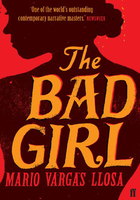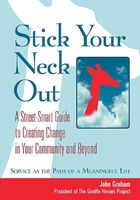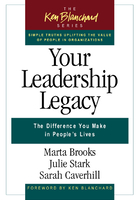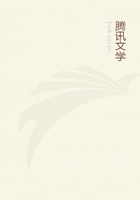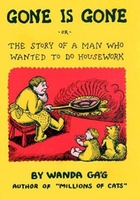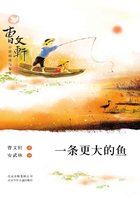IT STARTS WITH INGREDIENTS
We're romantics when it comes to cooking at home. Unapologetically sentimental and downright enthusiastic.
We love the process of choosing our food, whether it's carefully sourcing ingredients for a recipe or doing a routine refill on the things we always want around (nothing is nicer than a fully stocked fridge, right?). And we fall—hard, every time—for the act of cooking itself, the muscle memory that clicks on when we begin to dice an onion, the music we like to play while bouncing around the kitchen, the secret self-congratulatory thoughts when we manage to keep the kitchen clean while we cook. But most of all, we love that cooking offers a clear and immediate way to create, to take raw materials and transform them into an end result that satisfies on multiple levels.
Recipes are the trail maps that lead us to this success and inspire a sense of mastery—bragging rights and all. And there's plenty of romance in that. Recipes can be time capsules, scribbled over with notes in the margin from a grandmother, friend or a complete stranger. And a good recipe offers both consistency, producing the same result time after time, and flexibility, as we riff and refine with each use. When we pine for familiarity, that guarantee of comfort is a powerful force. Isn't that the same stuff that love stories are made of?
Even more evocative than recipes, though, are ingredients themselves. For most of us, ingredients are the entry point to a passion for cooking. As kids, we fixate on what we like and dislike, and that instinctive pull continues throughout adulthood, guiding our choices and helping us find the recipes that become our staples.
Anyone who cooks with any regularity hits a tipping point where they relinquish the safety of recipes and charge into the kitchen without them. In these moments, ingredients become even more critical, whether you're making something from memory or completely improvising. We rely on them to remind us how to get from point A to point B. It requires a level of trust, some intuition and a lot of paying attention to what you're cooking—all things that imbue the process with a sense of magic, particularly when you end up with something delicious—or at least pleasantly edible.
These days, our decision of what to cook very often starts with an ingredient, whether it's a beautiful piece of fruit or vegetable from the market, a wedge of exciting cheese we've stumbled across or a craving for a specific cut of meat. Only once we've chosen the lead actor is the script written and the cast assembled. We'll either seek out a recipe that spotlights our muse, or wing it based on our previous knowledge of the ingredient's potential in the kitchen.
This is not a new way of thinking about ingredients (although the extreme fetishization and documentation of them might be); it's really more a return to a former relationship with food. A few generations ago, most home cooks had a limited selection of ingredients to choose from—almost exclusively grown, raised or caught nearby—and this supply shifted with the seasons. Every year, mothers and grandmothers invented new ways to use up the season's offerings, and eventually they began to write down and share those recipes, first with their friends, then their churches and communities, then by publishing them in flyers, newspapers and cookbooks.
But the 20th century changed everything. Industrial innovation and wars brought us processed and frozen food. Advances in home appliances and cooking technology allowed home cooks (mostly women) to work less in the kitchen and more elsewhere. Fast food was invented and quickly evolved from novelty to epidemic. Americans started cooking less for basic sustenance and more for pleasure and entertainment.
That was a terribly condensed history, but it leads us right back to ingredient-driven cooking. Many of today's cooks—amateur and professional—have gone back to the old ways, letting the seasons and local ingredients drive their appetites and creativity. Allowing ingredients to be the guide makes us better (and usually healthier) cooks. When you focus on a recipe, you master that one recipe. But when you get a deep understanding of one ingredient, you can broaden your horizons. The more ingredients you master, the more intuitively you can cook. And the more enjoyable, magical and romantic the process of cooking becomes.
THE BIRTH OF SHORT STACK EDITIONS
This idea was one of the driving forces behind Short Stack Editions, our series of miniature cookbooks that each showcases a single ingredient. By focusing a set of recipes around one ingredient, we hoped to capture everything we loved about cooking: the reliability and consistency of a great recipe and the intuitive, freewheeling confidence that ingredients help us develop as cooks. We wanted to celebrate the things that had led us to make careers out of this passion.
It also came out of feeling that those very things were increasingly under attack.
We spent the first years of our careers working in New York City at food-centric magazines, where every published recipe was the product of a team of highly skilled professionals. By the time a recipe hit the newsstand, it had been passed through multiple recipe testers, editors, proofreaders, fact-checkers and so on.
But then the Internet happened. We'd come of journalistic age during what we know now as the high-water mark of print publishing. Then, as advertising dollars moved to the Web in the late aughts, and magazines and newspapers began to shrink or fold as a result, we followed the money over to the digital side of publishing, taking with us the ideology we inherited from print: If you're going to proudly share recipes with the world, they'd sure better work.
But the Internet wasn't playing by the same rules. Remember the first time you discovered that a quick Web search for, say, "apple pie recipe," could offer you thousands of options in an instant? We do. It seemed magical. But do you also remember the first time you got burned (figuratively or literally) by a recipe you pulled from an unfamiliar website? Same here. We can't count the number of times someone has complained to us about a flawed recipe they found online. The same thing that makes the Internet so democratizing and liberating—anonymity and access—is the same thing that offers us so many broken apple pie recipes.
Of course, some great sources for recipes emerged on the Web—professionally run websites like Serious Eats and Food52, hundreds of talented food bloggers, the online versions of print publications and many food blogs among them—but beyond the safety net of accountability, it was (and still is) a culinary minefield.
As the Internet continued to consume our lives, we found ourselves revisiting our cookbook collections and stashes of old food magazines more than ever before. We not only missed the reliability of printed recipes, but we also longed to produce something we could hold in our hands again.
So we set out to make ourselves a creative outlet, a little side project to work out some of these frustrations while we continued to make websites, apps and other digital content. We considered everything that we loved about cookbooks, magazines and newspapers—well-tested, dependable recipes created by professionals—and everything that frustrated us about the Internet and how it was changing our lives.
Our little publication would also be a business experiment. Like our future authors, we can feel the food-publishing world shifting under our feet. Magazine budgets and cookbook advances are shrinking, book royalty pay-outs are as rare as hen's teeth and everyone is talking about how the value of the recipe is trending toward zero. But what if we created a publishing model that put the author first? We wanted to find a sustainable way to celebrate the individuals who are responsible for driving the conversation about food and guiding the way we cook. We'd pay them for every one of their books that we print, forever and ever, and keep their issues in perpetual circulation. The author is rewarded for doing her or his job—creating awesome recipes that actually work—and the payoff continues as long as the publisher is doing its job by selling the books and printing more. It sounds obvious, but nobody (that we know of) does it this way.
Our plan wasn't an easy sell to potential authors, at least at first. We had no idea how many books we'd be printing, and therefore no real guess as to how much money they'd be making. It all depended on if we could find an audience.
At the same time, we were lucky enough to meet a very talented designer, Rotem Raffe, who shared our aesthetic admiration for the single-subject recipe pamphlets published by food and appliance brands in the mid-20th century. We decided that our booklets would be utilitarian, like magazines, but highly design-driven—little objects you'd want to display in your kitchen. We'd print the books on fancy paper and bind them by hand with baker's twine (still a questionable idea, but people seem to like it).
With all the pieces in place, we lined up three authors and their chosen ingredients—eggs, tomatoes and strawberries—and raised funds on Kickstarter (yes, we used the Internet! Fight fire with fire!) to publish their books under the name Short Stack Editions. The publication's name is an allusion to its diminutive size, yes, but also to its collectability—and, of course, pancakes.
We couldn't have predicted how quickly the concept would resonate. Within a few days, we'd met our Kickstarter goal, and by the end of the month-long fundraising period, we'd almost doubled it. Just a few weeks later, we were up to our necks in boxes of our first three volumes and learning, through trial and lots of error, the ins and outs of offset printing, the postal system, e-commerce and how long it takes to sew the spines of 9,000 books by hand.
We've figured a few things out since then. Now, some four years and 24 volumes later (and counting), we've applied our ingredient-forward ethos to the hardcover.
THE BIG BOOK
Initially, we didn't anticipate ever making a regular-size cookbook. Our small editions had exceeded all of our hopes and expectations. With every new manuscript, we're reminded of what we love about cooking: that we can still learn new things about ingredients we thought we knew so well and that there's always more to discover, always another dinner to successfully orchestrate.
But something else came out of Short Stack that we weren't expecting. We've started to see our approach as a framework for exploring the current state of American home cooking: a hugely expansive and amoebic food culture, developed over the past few decades by appropriating the world's many cuisines, borrowing and bending ingredients from hither and yon, then merging them with our increasingly evanescent regional traditions.
Promoting a specific ingredient embraces these broad, geographical influences on what and how we cook and invites questions about our broken agricultural and food systems. It taps into the zeitgeist of the country's current food obsessions, with its weird push-pulls of excess and restriction, entertainment and sanctity. The ingredient lens also helps us tackle some of our deepest frustrations with American cooking, most notably waste: The more you understand how to use an ingredient, the easier it is to use all of it. So it dawned on us that this discussion deserved a bigger platform than our small format allowed.
This is hardly the first—nor the 1001st—ingredient-driven cookbook. And, based on the 18 ingredients we've selected to feature here, it might seem as though we put on blindfolds, ran through the supermarket and knocked random items into our shopping cart. But choosing the ingredients to highlight in the following recipes wasn't an easy task. We started with a list of about 100 items—fresh produce, pantry and refrigerator staples, meat and diary—and narrowed it down to the stuff we always keep stocked in our kitchen, as well as the fresh ingredients we crave and covet most. There were earnest, hours-long discussions about brussels sprouts and unnecessarily heated arguments about celery (which, alas, didn't make the cut). We researched which ingredients are popular with home cooks right now, while trying to separate the fads from the foundations. The ingredients that we landed on are the ones that, viewed as a group, paint a panoramic picture of our current relationship with cooking. Taken individually, each of these ingredients operates like a new vantage point in the kitchen, providing insightful discoveries about cooking that lead to new sets of skills.
The recipes in this book were developed by Nick, Kaitlyn and 27 of America's best food writers, recipe developers, cookbook authors, food stylists and chefs—all of whom have either authored Short Stack Editions in the past or are writing one in the near future. These are all new recipes, appearing in print for the first time, but many have been part of our personal repertoires for years. Some were invented in spontaneous fits of ingenuity; others have roots in our favorite restaurants, cookbooks and food mentors. They all evoke the feelings that we love most about cooking: that sense of wonder, excitement and satisfaction that occurs when watching a chemical process result in something altogether new and delicious. And they all make great springboards, offering up a lesson about an ingredient that can be taken and improvised on until a new recipe-less creation forms.
The recipes also reflect our many shared "cooking moods." Some of these recipes are extremely easy and can be cooked with one hand dribbling a basketball; others take extra care and attention to get just right—just like some nights you want to cook an ambitious spread, while others all you can think about is a grilled cheese sandwich.
You'll notice that many of the recipes in this book aren't hyper-seasonal. Yes, we love filling up our canvas totes at the farmers' market each week as much as you do, but we're not strict, unwavering locavores, as much as we'd love to be. Although fresh produce such as apples, tomatoes, brussels sprouts and squash are at their best in season, we can find decent specimens at the grocery store throughout the year. This book is meant to inform the way most of us cook on a day-to-day basis; cooking with the seasons is a huge part of that, to be sure, but not everything.
We who binge and purge hundreds of cookbooks over the years have a term for the volumes we'll never throw or give away: keepers. And it's not a bit surprising that many of us share the same favorites. They're full of recipes that inspire, that inform, that work. Eventually they became part of our subconcious cooking minds.
Our goal when we set out to write this cookbook was to create a keeper. We hope this book earns a place in your kitchen for years to come.
—Nick Fauchald and Kaitlyn Goalen, November 2015

